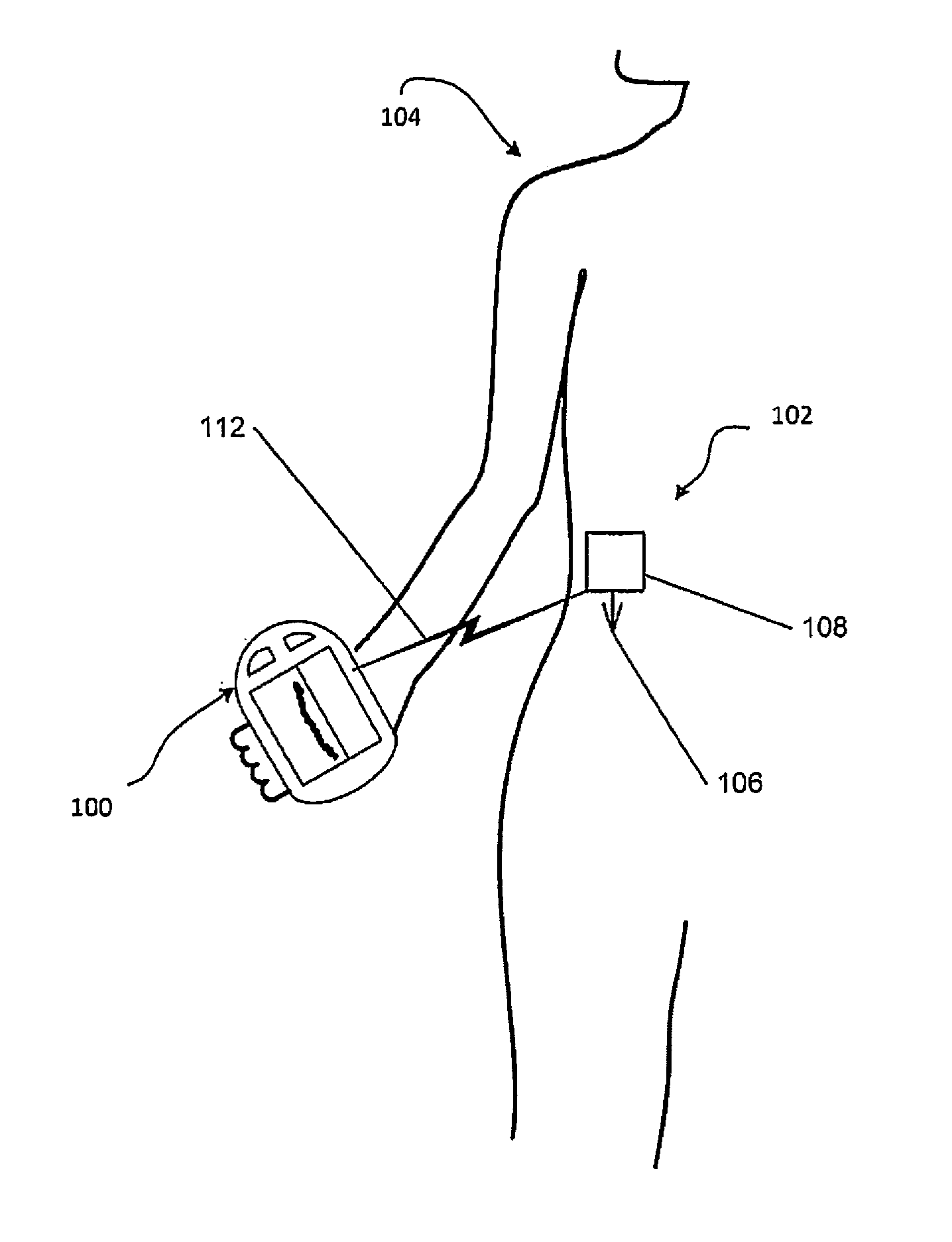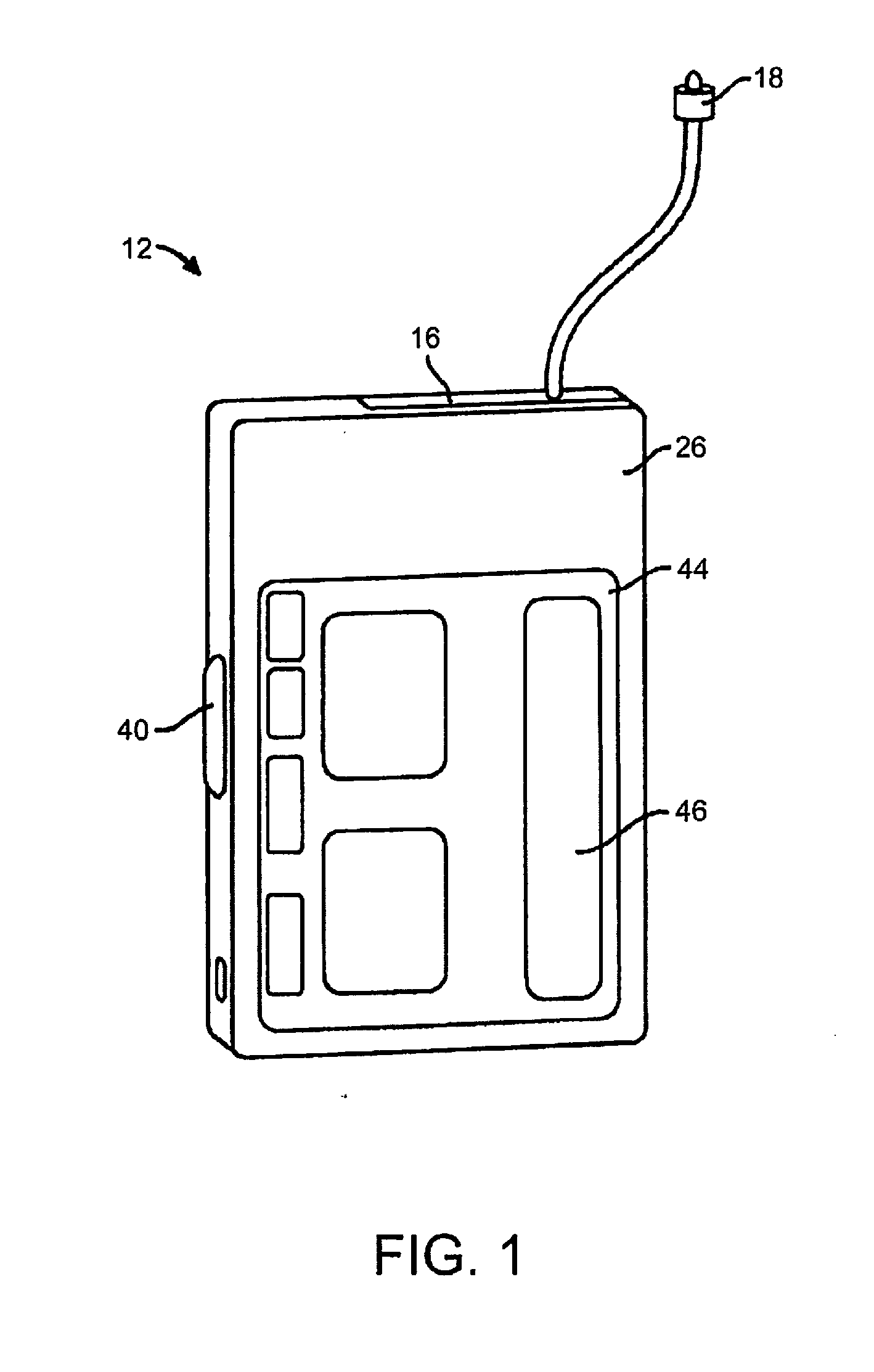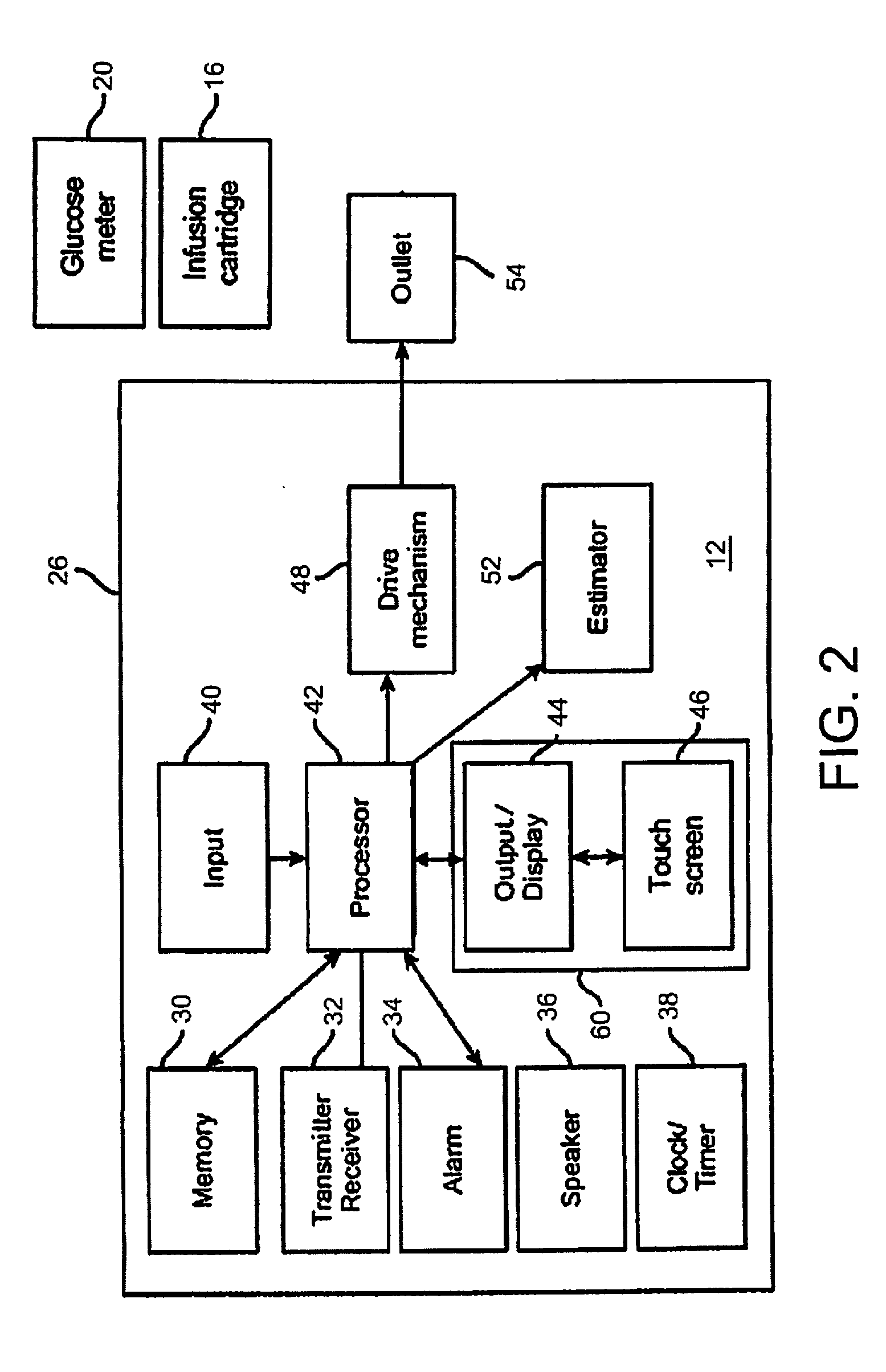System and method for mitigating risk in automated medicament dosing
a technology of automated dosing and risk, which is applied in the field of ambulatory infusion pump, can solve the problems of automatic dosing of insulin, unreliable cgm, and more unreliable cgm, so as to avoid the possibility of dropping the user's blood glucose too low, and the risk of dangerously high glucose level
- Summary
- Abstract
- Description
- Claims
- Application Information
AI Technical Summary
Benefits of technology
Problems solved by technology
Method used
Image
Examples
Embodiment Construction
[0021]Provided herein are systems, devices and methods for mitigating risk in automatically dosing insulin to patients based on readings from continuous glucose monitoring devices. Some embodiments may include advances in the internal components, the control circuitry, and improvements in a user interface of the systems and devices. The advances may allow for a safer and more accurate delivery of medicament to a patient than is attainable from other devices, systems, and methods.
[0022]FIG. 1 depicts an embodiment of a medical device that can be used with embodiments of the present invention. In this embodiment, the medical device is configured as a pump 12, such as an infusion pump, that can include an internal pumping or delivery mechanism and reservoir for delivering medicament such as insulin to a patient and an output / display 44. The type of output / display 44 may vary as may be useful for a particular application. The type of visual output / display may include LCD displays, LED d...
PUM
 Login to View More
Login to View More Abstract
Description
Claims
Application Information
 Login to View More
Login to View More - R&D
- Intellectual Property
- Life Sciences
- Materials
- Tech Scout
- Unparalleled Data Quality
- Higher Quality Content
- 60% Fewer Hallucinations
Browse by: Latest US Patents, China's latest patents, Technical Efficacy Thesaurus, Application Domain, Technology Topic, Popular Technical Reports.
© 2025 PatSnap. All rights reserved.Legal|Privacy policy|Modern Slavery Act Transparency Statement|Sitemap|About US| Contact US: help@patsnap.com



